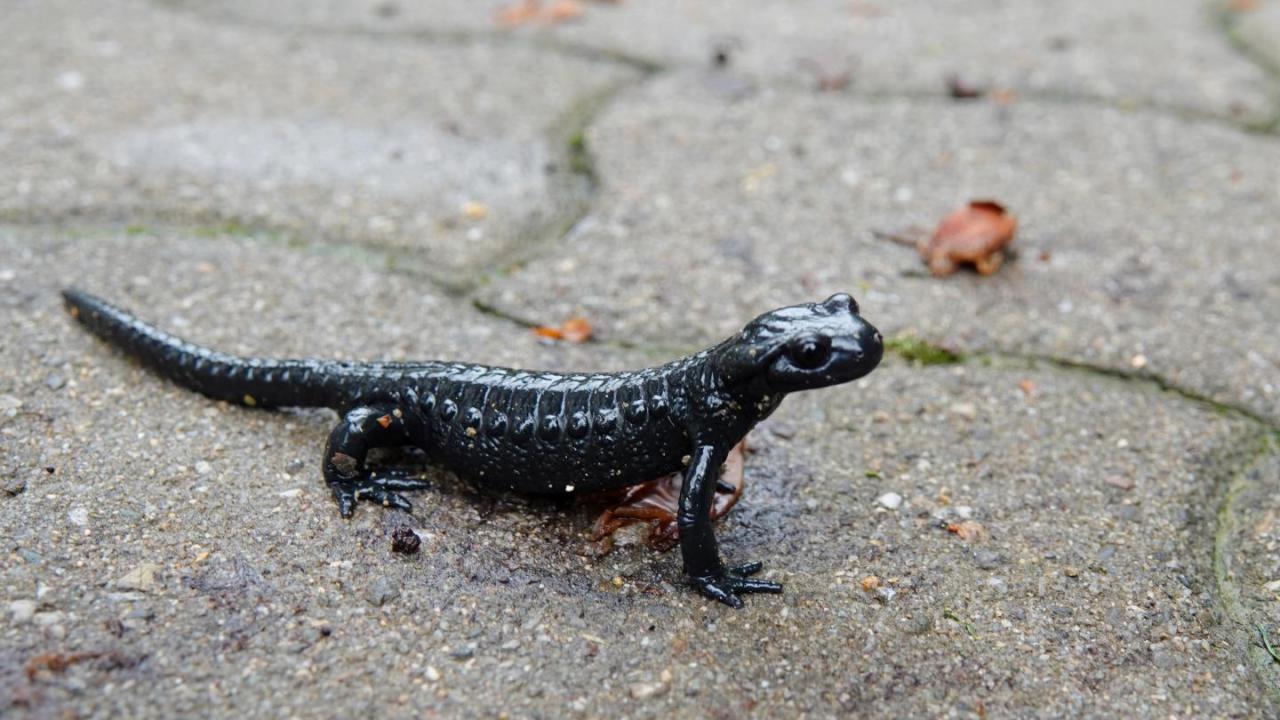Description:
The Alpine Salamander is almost entirely black and grows to about 15 cm long.
The ribs are clearly visible on the back and flanks.
There are three rows of nodules on the center of the back as well as at the top of both flanks that remind them a bit of a crocodile.
The species is found in the Alps, from southern Germany to northern Albania and from western France to Hungary.
The Alpine Salamander can be found up to 3000 meters, where other amphibians would not stand a chance due to the lower temperatures.
The Alpine Salamander does not depend on water for reproduction, unlike almost all other amphibians.
This allows the Alpine Salamander to live in relatively dry regions without surface water, which gives the species a great advantage over other species.
The Alpine Salamander is egg-bearing, which means that eggs are produced, but they fully develop in the mother and usually hatch there.
The female has a gestation period of at least two to three years, depending on the height at which she lives, which is exceptionally long in amphibians.
A female therefore does not produce young every year and when they are born there are always two young, unlike many other amphibians that deposit many hundreds of eggs.
Gasthaus Moosegg, Pfänder Mountain, Bregenz, Vorarlberg, Austria, 3 August 2020





